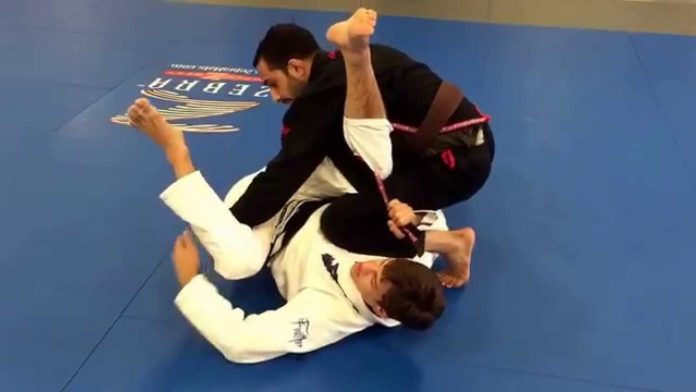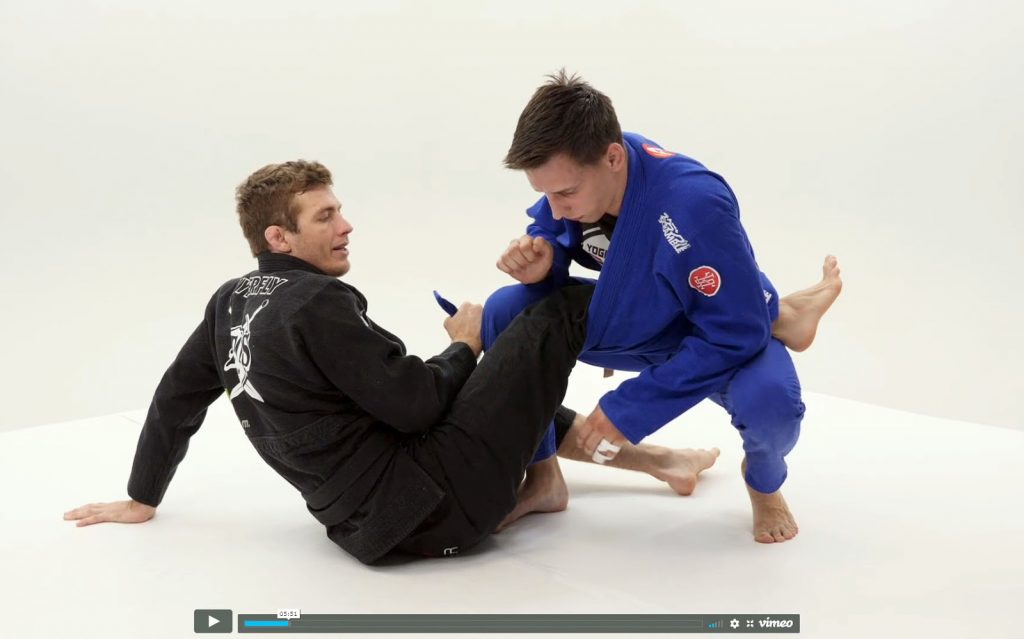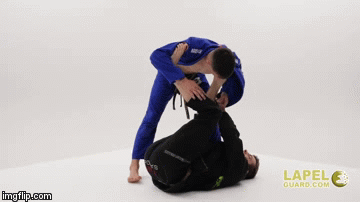
In the world of Brazilian Jiu-Jitsu, the guard is the most versatile position you can find yourself into. While being on top is always a preferred option, being in a Jiu-jitsu guard is also not half bad. in fact, many people seem to really enjoy playing for a guard, particularly as they’re starting out. In those terms, BJJ has countless of different open guard variations, most of them never before seen in martial arts. However, none are more polarizing than BJJ Lapel guards? Speaking of them, are they worth your time, or will they only work for a select few under very specific circumstances?
Keenan Cornelius is one of the best grapplers n the world. However, he has a very specific build to his body, being tall and lanky, and quite strong at the same time. Conversely, he had developed a guard game to suit his frame. In that sense, he is not unlike Marcel Garcia, who, not many people out there can emulate, given how his BJJ style and his build area a unique enough combination. Well, Keenan’s brainchildren are BJJ lapel guards, and he has come up with a bunch of them. today, the focus will be on all his guard, as well as a few BJJ lapel guards that predate his efforts of innovating in the realm of open guards.
BJJ Lapel Guards: A Mark Of Evolution Or A Waste Of Time?
This is the question that usually polarizes people’s opinions so much. Of course, those that train exclusively in No-Gi will tell you that anything Gi related has no real application in BJJ. In our study of lapel guards, we decided to exclude their opinion from the start given that it is irrelevant because NO-Gi folks have no idea how the gi works, especially in terms of BJJ lapel guards.
The lapel guards in Jiu-Jitsu work in a very specific fashion. there are many reasons why people like or dislike them. However, a fact of life is that they’re quite new, and till have a lot of development to undergo before we can really judge how effective they are. Keenan, as the man who has innovated more than anyone in this field, makes great use of them. However, a huge criterion for whether or not a BJJ guard is effective is whether r or not most people could use it against most types of opponents in a successful manner? ANd this is where BJJ lapel guards, at least for now, hit a stumbling block, of sorts.

Depends on how much you like tinkering with lapels, you might find BJJ lapel guards interesting or not, this is pretty much the same for any technique. Still, whether or not you like armbars, you do know they work. In fact, armbars are the number one move you can bet will work, according to statistics. However, with lapel guards, the question of effectiveness across the board is still open. So, how do we figure out whether or not they work?
Figuring Out the Best Of The BJJ Lapel Guards
As wit every study, we can go about in several different directions, when trying to figure out the parameters that we’ll use to determine whether or not the guards work. Given that BJJ lapel guards, apart from Keenan’s efforts, have not been used at the highest levels of competition (or any levels for that matter) frequently, we can’t use such data. that leaves us with a pretty biased analysis of whether or not they work.
In an attempt to figure out the best way to really gauge how BJJ lapel guards fare in general, we figured out three main criteria. The first has to do with the mechanics of the guard, and whether or not they’re viable for use (entering and/or transitioning from the guard. next, there’ the usual strengths and weaknesses debate, which we tried to solve very objectively. In order to really hone things in, we decided to provide you with a start rating s of three huge aspects of any guard. Those are retention, recovery, and offensive abilities. So without much further ado, let’s go deeper into BJJ lapel guards.
Lasso Guard
The first guard that suggested people could really get tied up in the Gi, is the lasso guard. It worked by wrapping a leg around the forearm of an opponent whose sleeve you control with a solid Gi grip. The Lapel lasso takes this a notch higher, using the opponent’s lapel instead of the sleeve for the basic guard position.
-
How it works
The way the lapel lasso works is by using the same side lapel of your opponent’s Gi. Suffice to say, just like for all the BJJ lapel guards, you need to loosen it up and get it free from the belt. The lapel then goes around your near side leg, which goes deep and hooks behind the hip. Most people like to grab the lapel with a thumbs-up grip, although this is debatable. From there, you have great control over one side of the opponent, even though you do not control their arm. like in the regular lasso guard.
Getting to this guard is fairly easy, as the lapel gets undone on itself most of the time anyway. Moreover, there aren’t too many wraps and grip changes to arrive at the final guard position.
-
Strengths
The lapel lasso provides great options for you to attack but limits you mostly to submission attacks. It can work for sweeps, but only if you also control the opposite side arm via a sleeve grip, In terms of submissions, inverting to a triangle, or setting up straight triangles or even Ashi Garami entries are solid routes to take. Moreover, the grip on the lapel is very hard to break.
-
Weaknesses
It is hard to compromise the opponent’s balance from this guard. The fact that the arm on the Lapel lasso side si free mans an opponent can use ti to post and prevent sweeps. Moreover, the guard does not help to break posture, so if an opponent stands you’ll have to find Gi pants grips to force them back down.
*** Retention: About halfway. You can easily prevent people from passing if you’re mobile, but if the get control over your free leg, they can immobilize it and then work the lapel problem.
**** Recovery: The fact you can invert and change the hand that grips the lasso means you can easily recover position in most situations. It also means you can use half gaurd as a checkpoint before recovering. However, late recovery, after an opponent gets side control is challenging, to say the least
** Attacks: Attacking is limited to the triangle and perhaps armbar options You might try and have fun with the Canto choke, but it will take some more tinkering with grips. Since sweeps are not really an option, this s good guard to hold an opponent from passing, at least for a while.
Worm Guard
Keenan’s first big hit among BJJ lapel guards is the notorious worm guard. It was one of the guards that were, and to a point, still is, notoriously hard to pass. It is a complicated guard, to say the least, which is why people have different levels of success with it. However, if you get used to tangling people up in it, you might just end up developing an annoying, and potentially quite effective game from there.
-
How it works

-
Strengths
People can’t pass it! Well, ok, they can, but it takes a lot of tinkering and effort. IF they haven’t spent a lot of time inside the Worm guard, people won’t be able to solve it quickly. IT takes care of posture, given that the lapel goes around your own leg. Moreover, it leaves a leg and an arm free for the bottom person to attack. The grip is notoriously hard to break, making it the key feature fo this guard, actually. Sweeps are readily available, but you will need to know what you are doing. A few submissions work well from the Worm guard as well.
-
Weaknesses
Although sweeping is not hard, it will still take a lot of work to get sweeps to work. As hard as it is to pass, the Worm guard is not an easy position to attack from. Experienced guard passers will nullify all attempts at sweeping, bringing you toa a standstill of sorts: they can’t pass, but you can’t attack a lot.
***** Retention: In terms of guard retention, the Worm guard gets full marks. In other words, when you get it, nobody is getting past it without spending at least a few minutes and fighting a real fight. Even then, most people won’t be bel to complete a pass.
*** Recovery: Recovery is a bit trickier, given the setup of the guard. When people try to pass the Worm guard, the focus is on breaking that dreaded grip. The moment it loosens up, you’ll most likely get your guard passed. A helpful tip is to watch out for positioning because you could get in a good recovery position while your opponent is focused on the grip battle. However, you’ll need to be ready for it.
*** Attacks: Sweeps are multiple. It will take time, but once you get the guard, sweeps will become impossible to prevent. The great thing about the Worm guard is that you end up in great controlling positions (because of that lapel grip) even after you sweep. the not so great thing is that you’ll need to work on your sweeps, and by work, mean work (and fail) a lot.
Gubber Guard
A mixture of the rubber guard, Williams guard, and the Rat guard. And it all starts from the closed guard. Suffice to say, you’ll need a bit of working knowledge from all of them to make this guard work. that said, this is one of eth BJJ lapel guards that really pays off, at least in my opinion. get to this one, and you can have all the fun you want.
-
How it works
The Gubber guard is a rubber guard with the lapel. that’s the easy version of it. The hard thing is actually getting there. Apart from having to release one lapel (same side), you’ll also need to break an opponent’s posture completely from the closed guard. then you pass the lapel behind their back, to the opposite side arm. At the same time, you need to have their far side arm trapped as if you were going to do an Omoplata(between your knee and elbow). Them you need switch grips again, after transferring your near side arm on the other side (like placing it for a cross collar choke).
And you’re still not there. A hip escape, a push on the head, and yet another grip switch before you pass the lapel underneath and over the leg that’s now on top fo the opponent’s back.
-
Strengths
This guard, once you get it is probably the most secure of all BJJ lapel guards out there. Once you’re in position, you can do anything. Omoplata,s Gogoplatas, armbars, Brabo chokes, triangles, you name it. Getting to the back is also a breeze, as are a bunch of different sweeps. There’s no way an opponent regains posture, and they are nowhere near passing.
-
Weaknesses
Getting to the guard has so many checkpoints that despite it being extremely reliable, you have a great probability of failing on your way there. Sweeping is also going to be tricky, but once you get a handle of passing the lapel form one arm to the other, this becomes easier.
***** Retention: Hardly a guard out there that’s easier to stay into. IF you want to hold someone in a guard, the Gubber guard is the way to go(provided you get there. People need to break grips and regain posture before they can think about passing.
** Recovery: I have no idea. Losing the Gubber guard would mean you had no idea what you were doing, or the opponent is ultra-high level. In any case, the setup means you can’t really recover back to this configuration easily. So, as good as it is to hold, it is the hardest to recover.
***** Attacks: A submission bonanza is available, as well as easy transitions to sweeps or the back. Not to mention ayn combination, you might think of that you actually do from the rubber or Williams guard.
Squid Guard
As funny as it sounds, this guard is the most attacking option out there. AS such, ti is also the easiest to get to but it is also one that people might figure out how to pass quickly. That said, if you’re good at setting it up and adjusting to what’s going on, I’d say that it is the number one option to experiment with BJJ lapel guards.
-
How it works

-
Strengths
This guard is actually the easiest of them a lot get to, hold and attack from. It opens up al your usual sweeps and submissions, without having to go through complicated setups. In fact, many of the attacks will come naturally to you, once you get the guard down. Quite hard to pas as well, given a powerful grip and broken posture.
-
Weaknesses
Vulnerable to leg locks. Controlling the near side leg with the same side lapel pretty much invites people to head into an Ashi Garami. the thing is, even if they don’t get a leg lock, switching planes like that means they’ll have an easier time breaking the grip which leaves you in a battle of sweeps. Moreover, there are ways to break the grip, unless you control the sleeve of the near side arm.
**** Retention: The guard is easy to retain if you’re going to accept the fact that you’ll have to move and adjust a lot. It is easy for an opponent to get good angles for a solid base. You’ll need to be able to maneuver and counters these angles, in order to safely stay in the guard.
**** Recovery: Easy. Even if your opponent almost passes the Squid guard, getting back I snot really too hard. As long as you have a foto on the hip and the lapel, people will actually find it hard to establish side control. I like this one the best in terms of recovery capabilities.
***** Attacks: Anything and everything. A clear winner in the category. From sweeps to submissions and leg lock entries, you can dow whatever you want here. Moreover, a simple pendulum motion will get you far with this guard. doesn’t require particular physical abilities, or previous knowledge of other guards to use successfully.
Ringworm Guard
This is the nuttiest of all BJJ lapel guards Keenan has come up with. Basically itis a worm guard, you just hold the lapel with the other hand, and the opponent has one knee on the ground. I guess Keenan needed a name for each position along the way, and this one is actually the position you get before you get to the worm guard.
-
How it works
So, as I said, this is just a pre-worm guard, worm guard. Switch the grips and you’ll be in the worm guard. That said, this guard does have some uses, particularly when an opponent goes down on one knee, which is oftentimes inevitable after some time in the worm guard. Once that happens, you can switch to the ringworm guard to try and sweep. There snot much else you can do, really.
-
Strengths
Oen thing I like about this guard is that it does not place the lapel control in a tight and immovable position. Quite the contrary, you have a lot of lapel slack here, and it can actually help you open up some sweeping options that are not therefor the worm guard. It also means people can find a way past the guard.
-
Weaknesses
Hardly any sweeps. getting the guard is easier than the worm guard, and it is even easier to get into it from the worm guard. However, once you’re in the ringworm guard, you can’t really mount any meaningful offense. That makes it ok for holding, particularly in the case of a semi crouched opponent. However, if you want to actually do something, you’ll most likely want to transition into one of the other BJJ lapel guards.
**** Retention: Not really different from the worm guard. Easy to retain, but that’s just about all that this guard is good for.
* Recovery: Nope. Once an opponent gets past the legs and blocks the free leg, trying to recover worm guard is a smarter choice. The ringworm might be along the way, but that lapel slack is a recipe for disaster if you don’t know what you’re doing.
** Attacks: Extremely few. A couple of sweeps are possible when playing with the lapel slack. The risk, however, outweighs the reward, particularly given there are virtually no recovery options.
De La Worm Guard
This is a blend of the De La Riva guard and worm guard. In fact, it is the Reverse De la Worm guard that I’d like to focus on here. Effective? Can be, creatively, if you can manage to get there or figure out the complicated mechanics of hybridizing already difficult open guards.
-
How it works
You get to he Reverse de la Worm guard by overcomplicating things and reaching with your free arm between your leg and the leg of your opponent, when in the ringworm guard. Lay back and you’ll be in an impossible difficult guard, both for passing and for playing. It is one of eth BJJ lapel guards of today, though, so we had to include it. Obviously, getting there is difficult and requires knowledge of the worm and ringworm guards, not to mention the De la Riva.
-
Strengths
Easy. The strongest grip of al lth BJ Jlapel guards is this one. It is not just the positioning or the lapel, but also the fact that the opponent’s leg is in the way of them breaking the grip. In other words, this guard has that unbreakable grip that’ll annoy everyone.
-
Weaknesses
Getting there, obviously. Even if you manage to set it up, controlling someone will prove really difficult, and you’ll need to spend a lot of time there to figure it out. Not to mention that most knowledgeable people will prevent you from ever arriving to the position.
***** Retention: Obviously very good. Hardly anyone is going to pass this guard without dealign with the grip first.
* Recovery: Too complicated to get straight back into from any guard recovery position. Not worth even a try.
** Attacks: Limited to sweeps. Not a great deal of submissions work from here, and even sweeps require deception on your part. Anyone with a respectable base will have no trouble deflecting sweet attempts, given how unnecessarily complex the guard position is.
Lapel Half Guard
finally, something that has been around for longer than Keenan’s intricate BJJ lapel guards. Using the lapel while in half guard is a great way of gaining some actual effective advantage and improving the rate of whatever it is that you’re doing. While it is more than obvious that lapels play a huge part in the deep half guard, they’re also highly useful in other half guard variations.
-
How it works
Easy. you release the same lapel as you do for all BJJ lapel guards we covered here today. Of course, this time, you’re in half guard, so actually threading the lapel is going to be easier. What you want to do is pass the same side lapel in between the legs, to your other arm which is already around the opponent’s top leg. Easy entry and plenty of opportunities from there. A thumb down grip si the better option.
-
Strengths
Sweeps are easy. Roll, get up on your knees, or simply do a technical stand-up. Whatever you choose, they’re going down and there’s nothing they can do about it. Plus, it is extremely easy to just hold on to the lapel and make any adjustments you like. Plus, D’arce chokes and guillotines are not a factor if you really get a solid grip.
-
Weaknesses
No submissions are available, and you can still get smashed. Granted, there are ways of getting back to position, but an experienced top player will hardly let you do it.
**** Retention: High marks, although not an unpassable guard. If you want to linger in half guard, the deep half might be a better option based on the principles of BJJ lapel guards.
**** Recovery: Easy. having the lapel loose means you can get a bite on the leg at any time and easily get into the lapel half guard position. Quite useful as well in preventing opponents from settling down in side control.
*** Attacks: Sweeps are extremely easy as we covered. I can’t see any direct submissions stemming from here, but the sweeps do lead straight into passes, like the leg drag, so you can work on subs from there. All in all, a highly offensive position.
Who Is The Winner?
Did we cover all fo the possible BJJ lapel guards? Nope, just the ones that people are using. is everyone going to be happy with this analysis? So far I haven’t seen a BJJ subject that everyone is happy about. That said, BJJ lapel guards are still in their experimental phase at best. Do they have a spot? Some might, but only in very specific situations. A lot more testing needs to be done, but if you know exactly what you want out of a lapel guard, make your pick accordingly and let us know how you rate them.



![Darce Choke Encyclopedia – Origins, Mechanics and Variations [2025] BJJ, choke, Brabo, BJJ Darce Choke, D'arce Choke, Darce BJJ Choke](https://bjj-world.com/wp-content/uploads/2017/11/JungPoirierLeeYahoo-218x150.jpg)









![Closet Closed Guard Craig Jones DVD Review [2025] Closet Closed Guard Craig Jones DVD Review](https://bjj-world.com/wp-content/uploads/2025/03/closet-closed-guard-craig-jones-dvd-review-218x150.png)
![Xanadu Back Takes Levi Jones-Leary DVD Review [2025] Xanadu Back Takes Levi Jones-Leary DVD Review](https://bjj-world.com/wp-content/uploads/2025/03/xanadu-back-takes-levi-jones-leary-dvd-review-218x150.png)

![No-Gi Grapplers Guide To Front Headlock Joel Bane DVD Review [2025] No-Gi Grapplers Guide To Front Headlock Joel Bane DVD Review](https://bjj-world.com/wp-content/uploads/2025/03/no-gi-front-headlock-joel-bane-dvd-review-218x150.png)

![Get Off My Legs Gringo Craig Jones DVD Review [2025] Get Off My Legs Gringo Craig Jones DVD Review](https://bjj-world.com/wp-content/uploads/2025/03/get-off-my-legs-gringo-craig-jones-dvd-review-218x150.png)


![The Buchecha Gi Takedown System DVD Review [2025] The Buchecha Gi Takedown System DVD Review](https://bjj-world.com/wp-content/uploads/2025/01/buchecha-gi-takedown-system-dvd-review-100x70.png)
![Osoto Gari for Jiu Jitsu Jackson Nagai DVD Review [2024] Osoto Gari for Jiu Jitsu Jackson Nagai DVD Review](https://bjj-world.com/wp-content/uploads/2024/10/osoto-gari-for-jiu-jitsu-jackson-nagai-dvd-review-100x70.png)

![Leg Lock Strategies: Navigating Entanglements Jack Stapleton DVD Review [2024] Leg Lock Strategies: Navigating Entanglements Jack Stapleton DVD Review](https://bjj-world.com/wp-content/uploads/2024/12/navigating-entanglements-jack-stapleton-dvd-review-100x70.png)
![Daisy Fresh WHITE BELT Wrestling Curriculum DVD Review [2024] Daisy Fresh WHITE BELT Wrestling Curriculum DVD Review](https://bjj-world.com/wp-content/uploads/2024/10/daisy-fresh-white-belt-wrestling-curriculum-review-100x70.png)

![10th Planet Leg Locks Jeremiah Vance DVD Review [2025] 10th Planet Leg Locks Jeremiah Vance DVD Review](https://bjj-world.com/wp-content/uploads/2025/01/10th-planet-leg-locks-jeremiah-vance-dvd-review-100x70.png)
![Systematically Attacking The Crucifix Gordon Ryan DVD Review [2024] Systematically Attacking The Crucifix Gordon Ryan DVD Review](https://bjj-world.com/wp-content/uploads/2024/10/systematically-attacking-the-crucifix-gordon-ryan-dvd-review-100x70.png)
![Master Scissor Sweep Ryan Scialoia DVD Review [2025] Master Scissor Sweep Ryan Scialoia DVD Review](https://bjj-world.com/wp-content/uploads/2024/12/scissor-sweep-ryan-scialoia-dvd-review-100x70.png)
![Guard Busters Bill Cooper BJJ DVD Review [2025] Guard Busters Bill Cooper BJJ DVD Review](https://bjj-world.com/wp-content/uploads/2025/03/guard-busters-bill-cooper-bjj-dvd-review-100x70.png)

![Crush The Guard Vagner Rocha DVD Review [2024] Crush The Guard Vagner Rocha DVD Review](https://bjj-world.com/wp-content/uploads/2024/10/crush-the-guard-vagner-rocha-dvd-review-100x70.png)
![Front Headlock and Turtle Escapes Brian Glick DVD Review [2024] Front Headlock and Turtle Escapes Brian Glick DVD Review](https://bjj-world.com/wp-content/uploads/2024/11/headlock-and-turtle-escapes-brian-glick-dvd-review-100x70.png)




![Master The Move Anaconda Strangle John Danaher DVD Review [2025] Master The Move Anaconda Strangle John Danaher DVD Review](https://bjj-world.com/wp-content/uploads/2025/02/anaconda-strangle-john-danaher-dvd-review-100x70.png)


![Shin to Shin Eoghan O’Flanagan DVD Review [2025] Shin to Shin Eoghan O'Flanagan DVD Review](https://bjj-world.com/wp-content/uploads/2024/12/shin-to-shin-eoghan-oflanagan-dvd-review-100x70.png)
![The Closed Guard Malachy Friedman BJJ DVD Review [2025] The Closed Guard Malachy Friedman BJJ DVD Review](https://bjj-world.com/wp-content/uploads/2025/01/closed-guard-malachy-friedman-bjj-dvd-review-100x70.png)


![Jeff Higgs Self Defense Guard BJJ DVD Review [2024] Jeff Higgs Self Defense Guard BJJ DVD Review](https://bjj-world.com/wp-content/uploads/2024/09/jeff-higgs-self-defense-guard-bjj-dvd-review-100x70.png)
![Total Domination Top Control Mariusz Domasat DVD Review [2024] Total Domination Top Control Mariusz Domasat DVD Review](https://bjj-world.com/wp-content/uploads/2024/09/domination-top-control-mariusz-domasat-dvd-review-100x70.png)